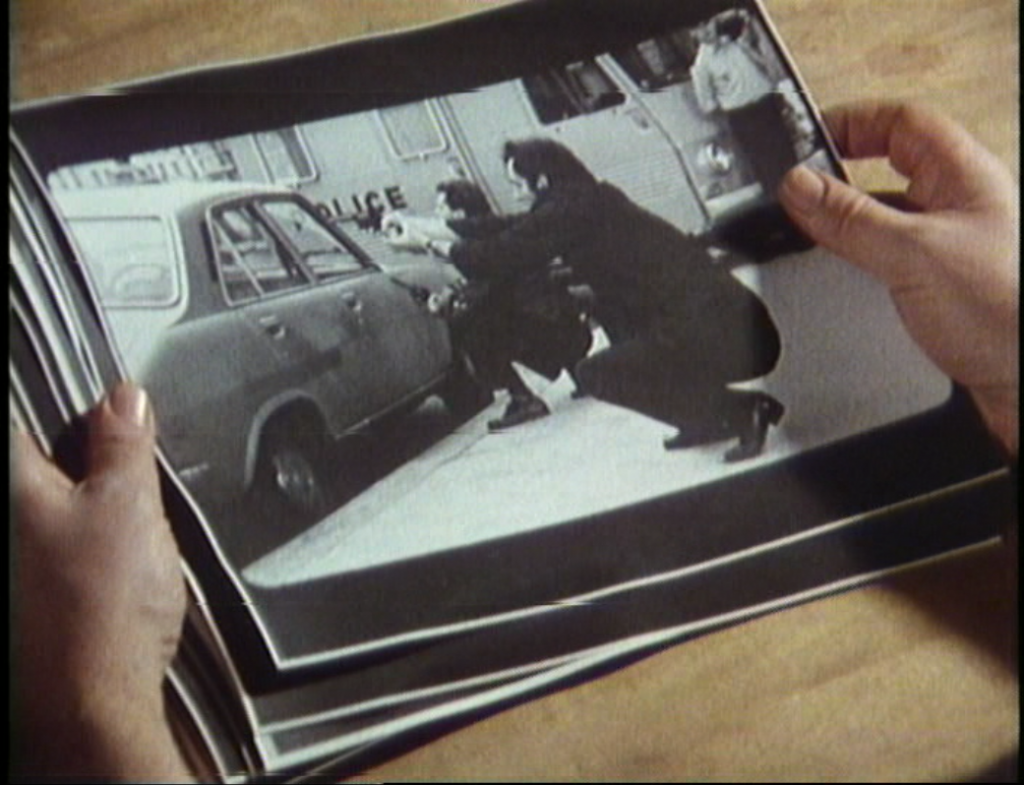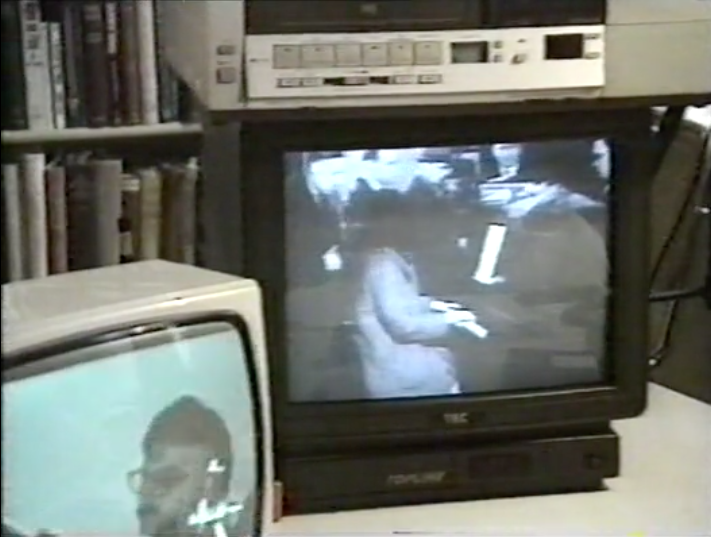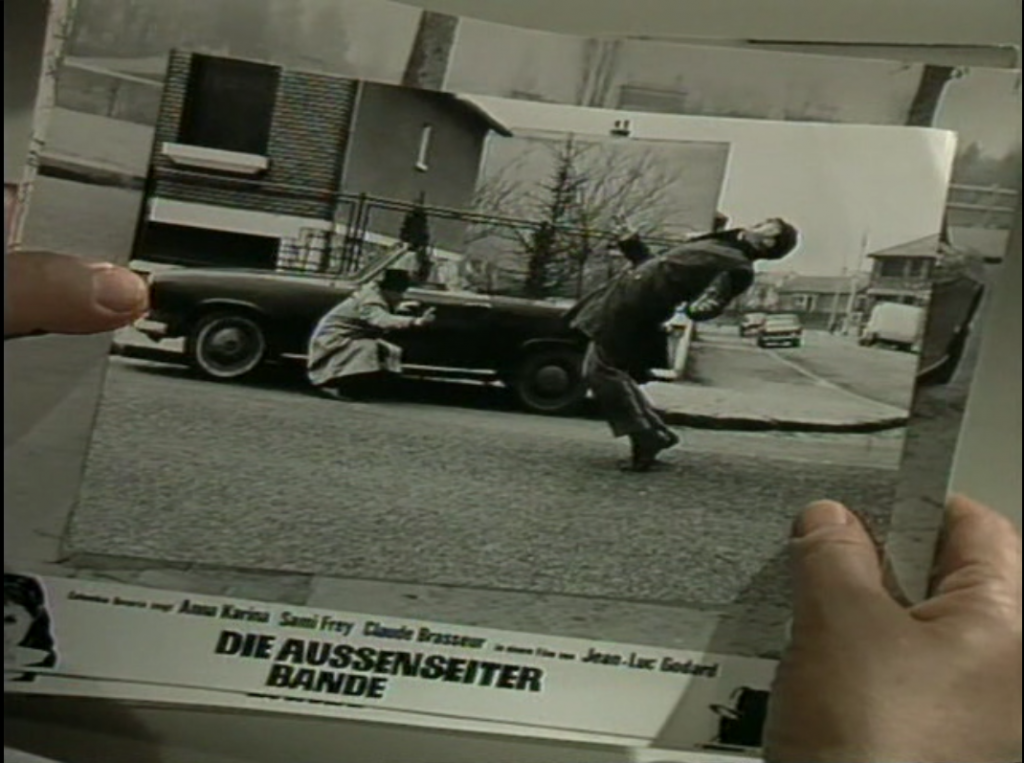17.04.19 | Working on the Image | Insights into the work of Hartmut Bitomsky | Part 2
Today we continue with our Hartmut Bitomsky series. And before that, we have something special for you. At 6 PM you can listen to a radio play by Ludwig Harig in the Luru Kino der Spinnerei.
Dying is never truthful in motion pictures, yet the drama of death is omnipresent, particularly in the sometimes linear, sometimes arduous journey film characters have to undertake to meet their end. For “it is rather killing that cinema is concerned with and less death itself. Cinema engages in activities and less in conditions.”
With an introduction by Frederik Lang (in German)
17. April, 19 Uhr – Luru Kino in der Spinnerei – € 6,5 (5,5 red.)
[Working on the image | Insights into the work of Hartmut Bitomsky]
| Wed 17.4 Luru Kino | WORKING ON THE IMAGE Insights into the work of Hartmut Bitomsky |
| 6 PM | LUDWIG HARIG | RADIO PLAYS A Flowerpiece Composition: Wolfgang Wölfer • Director: Hans Bernd Müller • With Günther Sauer, Joachim Nottke, Charles Wirths • Ensemble: Zürcher Kammersprechchor and the Kinderfunkensemble Christa Frischkorn • Production: SR/HR/SDR/SWF 1968 • 53’ |
| 7 PM | Introduction by Frederik Lang Bresson’s “L’Argent” BRD 1983, D: Hartmut Bitomsky, Manfred Blank, Harun Farocki, 30’, dOV, File Cinema and Death BRD 1988, D: Hartmut Bitomsky, 46’, dOV, Betacam SP |
| 9 PM | Cinema and Wind and Photography D 1991, D: Hartmut Bitomsky, 56’, dOV, DigiBeta Spare Time UK 1939, D: Humphrey Jennings, 15’, englische OV, 16mm |
CINEMA AND DEATH
FRG 1988, D: Hartmut Bitomsky, 46′, German version, Betacam SP
BRESSON’S “L’ARGENT”
FRG 1983, D: Hartmut Bitomsky, Manfred Blank, Harun Farocki, 30′, German version, file
CINEMA AND DEATH is a film essay on the narratology of “cinematic death” in commercial cinema, a death that is accompanied by picturesque settings and self-referential acting. Bitomsky’s directorial reduction embodies the downright opposite: throughout the film, he is sitting in his dimly lit study, we become aware of film photographs spread out, cigarettes burning down in the ashtray and books that have been used – a seemingly private situation, an intimate dialogue with the films.
BRESSON’S “L’ARGENT” is the attempt of film analysis with the means of cinematography. This methodically reflexive approach on Robert Bresson’s last film is far from merely reproducing or even rhapsodizing, as Bitomsky makes clear in the very beginning: lying on the table in front of him is the object of his examination, that is condensed moments of cinema in the form of black and white photographs of Bresson’s film that was shot in colour – which is no aesthetic deficiency, as “a film stands in the same right to what is said or written about it”.
Extract

CINEMA AND WIND AND PHOTOGRAPHY
D 1991, D: Hartmut Bitomsky, 56′, German OV, DigiBeta
SPARE TIME
UK 1939, D: Humphrey Jennings, 15′, English OV, 16mm
How should one define the relationship of documentary film to reality? Does it aim at authenticity or is it rather an “exile of reality”, a “foreign homeland of reality”, where the pre-filmic, stripped of its immediacy, comes to its own right in the first place? Where in its mis-en-scène would be the line drawn to a fictional film, if drawing a line would succeed at all?
These are the kind of questions this film essay on the history and aesthetics of documentary film deals with in its seven chapters, its form decidedly incorporating the open motion of the quest. It is not about assigning rights or wrongs to individual protagonists or theorists of documentary film. Emphasised is the indecisive, ongoing dialogue with their ideas – in a kind of spatial experimental setup. We observe how Hartmut Bitomsky and his staff in turn watch films and relate them to each other. They are shown in a workspace equipped with several monitors and VHS recorders, theory books are piled up, now and then videocassettes with the next film examples are picked out and stage directions are being given. The intrinsic aesthetic value of the samples becomes secondary, what matters is the visual and ideational mediation work. For example, sequences of Humphrey Jennings’ SPARE TIME undergo an aestehtic translation. Following Bitomsky’s film, it will be shown in its entirety – what is stressed in the work of reference, what is left out?











